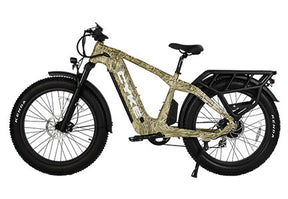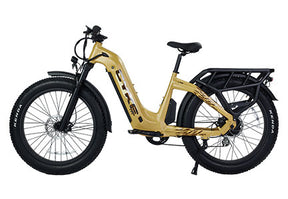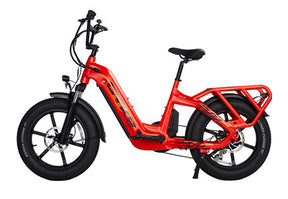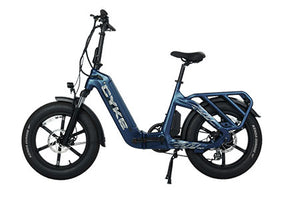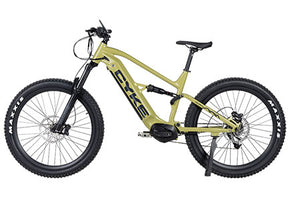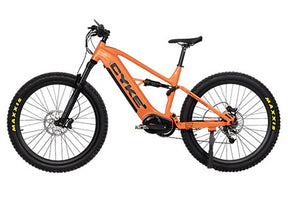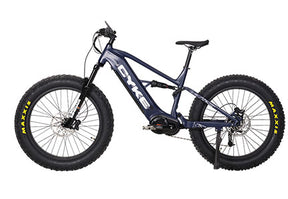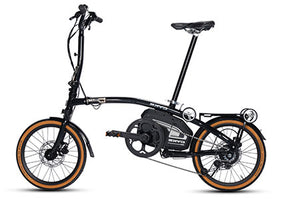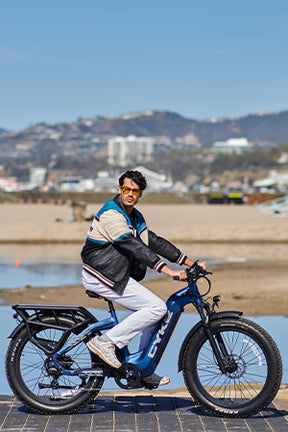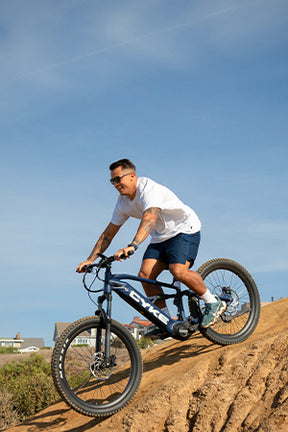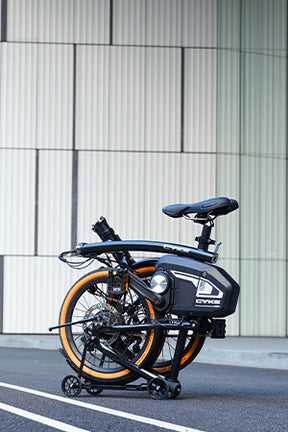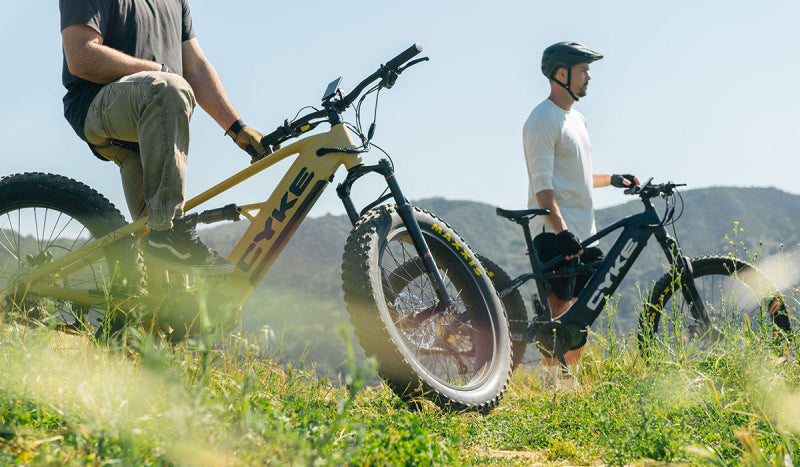Featured in this posts
How to Choose the Right Size of the eBike Frame
Finding the perfect eBike starts with one crucial step: getting the frame size right. Many riders focus on motor power, battery range, or other exciting features. But here's the truth - none of that matters if your eBike doesn't fit properly.
This guide walks you through everything you need to know about ebike frame sizing. You will learn how to measure yourself, understand frame geometry, and avoid common mistakes.
Let’s figure out how to choose an eBike that fits like it was made just for you.
Why Frame Size Matters for eBikes
Frame size is the most important part of eBike sizing. Reason being, once you pick it, you’re locked in. You can swap out things like the saddle, stem, or handlebars to fine-tune your fit, but the frame itself won’t change.
Getting the wrong frame size creates problems that go beyond simple discomfort.
A frame that’s too small can cause cramped posture, poor leg extension, and knee or back pain. One that’s too large makes handling harder, reduces control, and complicates mounting and dismounting.
Proper e-bike fitting also impacts the bike's performance. When you're positioned correctly, you can pedal more efficiently. This extends your battery range and makes the motor assistance feel more natural. You'll also have better control over the bike's power delivery and braking.
The investment factor matters too. eBikes cost more than regular bicycles. Getting the size wrong means you've spent significant money on something that doesn't serve you well.
Understanding eBike Frame Geometry
Frame geometry refers to how the bike’s parts are shaped and placed. Understanding these basics helps you make better decisions about e-bike sizing and ensures you get the right fit.

Top Tube Length
This determines how far you need to reach from the seat to the handlebars. A longer top tube stretches you out more, while a shorter one keeps you more upright. This measurement has the biggest impact on your comfort and control.
Seat Tube Length
This measurement runs from the bottom bracket (where the pedals attach) to the top of the seat tube. It determines how high the seat can go and affects your leg extension when pedaling.
Seat Tube Angle
The seat tube angle, usually 71°–76°, determines how far the seat tube leans back and affects rider weight distribution. It measured from the rear side of the seat tube relative to a horizontal line from the ground.
A smaller angle (slack) means the seat tube leans further back, shifting more weight toward the rear and creating a stretched-out feel. A larger angle (steep) positions the tube more upright, moving weight forward, which can make climbing easier by keeping more weight over the front wheel.
Reach
Reach is the horizontal distance from the center of the bottom bracket to the center of the top of the head tube. Similar to effective top tube length, it helps determine how stretched out a rider will feel on the bike.
Bikes with shorter reach feel more compact and are often preferred for relaxed riding styles. Longer reach frames create a stretched-out position, better suited to performance-focused or aggressive cycling.
Stack
Stack measures the vertical distance from the center of the bottom bracket to the center of the top of the head tube. A lower stack positions the rider in a more aggressive, forward-leaning posture, ideal for speed and aerodynamics. A higher stack results in a more upright, comfortable position, often preferred for endurance or casual riding.
Head Tube Length
This is the end-to-end length of the head tube. When combined with fork length and wheel size, it influences overall eBike fit and posture. Shorter head tubes give a lower, aerodynamic position for racing, while longer ones provide a more upright, comfortable posture.
Stand-Over Height
It represents the vertical distance from the ground to the midpoint of a bike’s top tube. This measurement is crucial for proper fit, as riders should have at least 1–2 inches of clearance when standing over the top tube. This measurement is crucial for safety when stopping or dismounting from the vehicle.
How to Measure Yourself for the Right Fit
Height and Inseam Guide
- Measuring Your Height: Stand against a wall (wearing shoes you’ll be cycling with most frequently). Have someone mark the top of your head on the wall. Measure from the floor to this mark. Be sure to stand straight with your head level.
-
Measuring Your Inseam: This is the distance from your crotch to the floor. Stand with your back against a wall, feet about 6 inches apart. Place a book between your legs like a seat, spine against the wall, and push it up firmly. Mark where the top of the book touches the wall. Measure from the floor to this mark.
Once you have this measurement, use the Leg Inseam Method to quickly estimate the correct bike frame size. Just grab a calculator and follow the formulas below:
- City Bike – Leg inseam (cm) × 0.685 = Frame size (cm)
- Mountain Bike – Leg inseam (cm) × 0.66 = Frame size (cm)
- Road Bike – Leg inseam (cm) × 0.70 = Frame size (cm)
This will give you a solid starting point before checking a brand’s specific sizing chart.
CYKE Frame Size Chart
CYKE offers two main series of eBikes, each designed for different riding styles and needs.
Family Series
The Family Series is perfect for everyday use. Here's the bike frame sizing chart for the Family Series electric bikes:
| Model | Frame Size | Recommended Rider Height |
| Cheetah | ~ 18” | 5’4” - 6’8” |
| Lynx | ~ 18” | 5’4” - 6’8” |
| Collie | ~ 17” | 5’0” - 6’5” |
| Grizzly | ~ 17” | 5’1” - 6’5” |
Cross Series
Cross Series tackles off-road. They come in two eBike frames: 17-inch and 19-inch. Bike frame sizing chart for Cross Series electric bikes:
| Model | Frame Size | Recommended Height |
| Falcon A | 17/19 inch | 5.1 - 6.3 ft / 5.2 - 6.4 ft |
| Falcon S | 17/19 inch | 5.1 - 6.3 ft / 5.2 - 6.4 ft |
| Falcon X | 17/19 inch | 5.1 - 6.3 ft / 5.2 - 6.4 ft |
Test Ride Tips
Nothing beats actually riding a bike before making your final decision. A test ride can reveal fit and comfort issues that measurements and charts might miss.
- Try different sizes. Start slow. Pedal flat ground. Feel the ebike frame. Can you touch ground easily? Adjust seat height. Reach bars without strain.
- Test multiple riding positions. Ride upright, leaning forward, and standing. The bike should feel comfortable in all the positions you plan to use.
- Ride for at least 10–15 minutes and note any discomfort. Pay attention to our knees, back, wrists, and shoulders. Any pain or stiffness suggests a sizing or fit issue.
- Assess overall control. You should feel in complete control of the bike. If you feel stretched out or cramped, the frame size probably isn't right.
- Check mounting and dismounting. This is especially important for eBikes, as their extra weight can make them harder to handle.
- Use the test ride to talk with shop staff about any issues. Often, small tweaks to the seat, handlebars, or controls can greatly improve the fit.
Common Mistakes to Avoid
Many people make predictable errors when choosing their first eBike. Learning from these common mistakes saves you time, money, and frustration.
Going by Wheel Size Alone
One of the biggest mistakes buyers make is assuming wheel size determines frame fit. You might think a 26-inch wheel eBike automatically fits smaller riders, while a 29-inch wheel bike suits taller people.
This thinking is completely wrong. Wheel size affects how the bike rides and handles, but it has little to do with whether the ebike frame fits your body properly.
Ignoring Reach and Riding Style
Reach refers to the horizontal distance from your seat to the handlebars. This measurement significantly affects your comfort and control, especially during longer rides.
If the reach is too long, you'll feel stretched out and uncomfortable. Your back and shoulders will ache. If it's too short, you'll feel cramped and won't have proper control over the bike.
Your riding style should influence your choice of reach. If you plan to use your eBike for relaxed commuting or casual rides, you will want a shorter reach that keeps you more upright. This position is comfortable for longer periods and gives you better visibility of traffic and surroundings.
If you plan more aggressive riding or longer distances, you might prefer a slightly longer reach. This position is more aerodynamic and efficient for pedaling, though it requires more flexibility and core strength.
Choosing Based on Height Alone
Your inseam measurement is often more important than your height for bike frame sizing chart purposes. People of the same height can have very different inseam lengths, which significantly affects what frame size works best.
Assuming All Brands Size the Same
Each manufacturer has slightly different sizing standards. Always check the specific brand's sizing chart rather than assuming consistency across brands.
Conclusion
Choosing the right ebike frame size sets the foundation for years of enjoyable riding.
Start with accurate measurements of your height and inseam. Use manufacturer sizing charts as a guide, but remember that each brand may size differently. Consider your intended use, riding style, and any physical limitations that might affect your needs.
Investing time in proper e-bike sizing pays off in comfort, performance, and enjoyment. A well-fitted eBike becomes an extension of your body, making every ride a pleasure rather than an endurance test.
